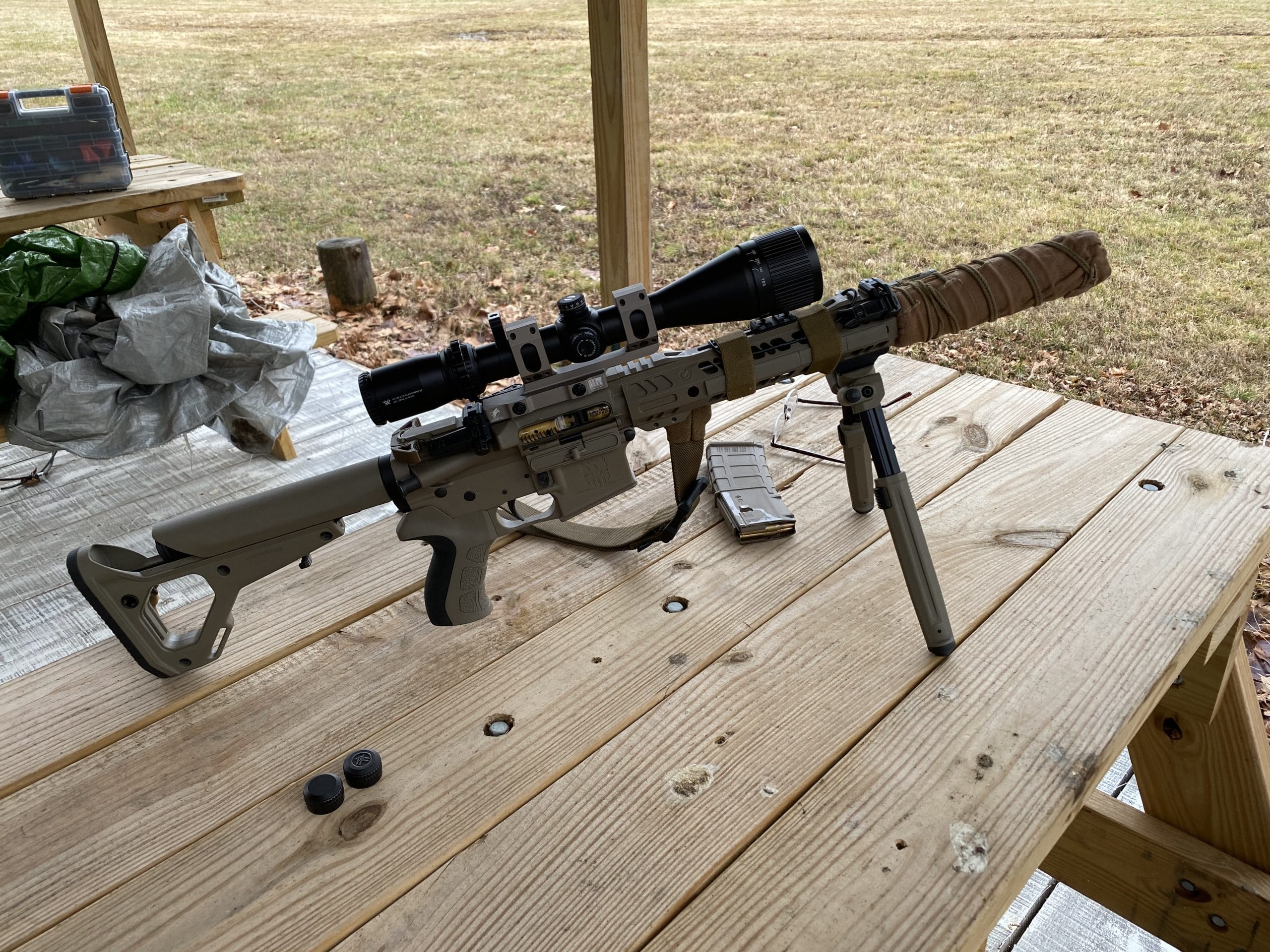
Categories:
When it comes to the AR-15 rifle platform, one of the most critical factors to consider is the caliber of ammunition it fires. Among the various options available, two popular choices are .223 and 5.56 NATO, while another emerging contender is the .300 Blackout. Understanding these calibers is essential for any shooter looking to optimize their AR-15’s performance. The .223 Remington and 5.56 NATO rounds may appear similar, but they have distinct differences that affect their compatibility with different rifles and their ballistic characteristics.
In this discussion, we will explore these differences in depth and shed light on the advantages and disadvantages of each caliber. Additionally, we will delve into the relatively newer contender in this arena – the .300 Blackout cartridge – which offers unique features that cater to specific shooting needs. By understanding these calibers’ nuances, shooters can make informed decisions about selecting ammunition that aligns with their intended purposes, whether it be precision shooting, self-defense applications, or hunting various game sizes.
When it comes to understanding AR-15 calibers, it is crucial to differentiate between the .223 Remington and the 5.56 NATO cartridges. Although these two calibers may appear similar, they possess distinct variations that affect their performance and usage. One significant difference lies in their chamber specifications. While both rounds have a similar exterior shape, the 5.56 NATO cartridge has a longer throat, allowing for higher pressure levels compared to the .223 Remington.
Consequently, shooting 5.56 NATO ammunition in a gun chambered for .223 Remington can potentially lead to increased pressures, affecting both accuracy and reliability. Moreover, another dissimilarity lies in their military origins. The 5.56 NATO round was initially designed for military use and exhibits enhanced performance characteristics suitable for combat scenarios. Conversely, the .223 Remington round was primarily developed for civilian applications such as varmint hunting or sport shooting.
Furthermore, bullet weight options vary between these calibers due to differences in overall length and pressure limitations.
The 5.56 NATO caliber is a widely used cartridge in military and law enforcement applications. Developed by the North Atlantic Treaty Organization (NATO), it was designed to improve upon the performance of the .223 Remington round. While these two calibers may appear similar, there are important differences to consider.
The 5.56 NATO cartridge has higher chamber pressure and operates at a higher velocity compared to the .223 Remington. This results in increased muzzle energy and improved long-range accuracy. Additionally, the 5.56 NATO round features a thicker brass case, enhancing its durability for sustained automatic fire.
One crucial factor to note is that while .223 Remington ammunition can be safely fired in a gun chambered for 5.56 NATO, the reverse is not recommended due to potential safety concerns. The higher chamber pressures of the 5.56 NATO can exceed what a gun chambered for .223 Remington is designed to handle.
Understanding these distinctions between the .223 and 5.56 NATO calibers ensures proper ammunition selection and safe usage of guns chambered for each specific cartridge type.
The .223 caliber is a popular choice among gun enthusiasts due to its versatility and widespread use. It is commonly used in rifles such as the AR-15 platform, offering a balance between power and recoil. The .223 cartridge is known for its high velocity, flat trajectory, and excellent accuracy.
One key aspect to understand about the .223 caliber is its compatibility with different ammunition types. While it shares similarities with the 5.56 NATO round, there are subtle differences that should be taken into account. The .223 cartridge has slightly smaller chamber dimensions compared to the 5.56 NATO, which affects pressure levels when firing. As a result, it is generally safe to fire .223 ammunition in a rifle chambered for 5.56 NATO, but not vice versa.
Additionally, it’s important to note that the .223 caliber offers an extensive range of bullet options with varying weights and designs suitable for different purposes like hunting or target shooting. Its versatility makes it a popular choice among shooters seeking reliability and precision in their guns.
Exploring the World of AR-15 Calibers: .223 vs. 5.56 NATO vs. 300 Blackout
Understanding the various calibers available for AR-15 rifles is crucial for any gun enthusiast or potential owner. The most common calibers used in these rifles are .223, 5.56 NATO, and 300 Blackout, each offering unique characteristics and purposes. The .223 caliber is a popular choice due to its versatility and availability. It delivers high velocity and flat trajectory, making it suitable for target shooting, varmint hunting, and competition shooting.
On the other hand, the 5.56 NATO caliber is nearly identical to .223 but designed for military use with slightly higher pressure levels. In recent years, the 300 Blackout has gained significant popularity among shooters seeking a more versatile round. It offers greater bullet weight options and increased stopping power at shorter ranges compared to its counterparts. Understanding these calibers requires considering factors such as intended use, range limitations, ammunition availability, terminal ballistics, and gun compatibility.
The 5.56 NATO caliber holds a significant place in the world of guns, particularly with the AR-15 platform. Developed by the North Atlantic Treaty Organization (NATO), this caliber was designed to replace the older .308 Winchester round, offering several advantages.
The 5.56 NATO cartridge is known for its higher velocity and flatter trajectory, making it ideal for longer range engagements. It also exhibits reduced recoil compared to its predecessor, enabling better control during rapid fire. Furthermore, its lightweight design allows for increased ammunition capacity without sacrificing performance.
Another key feature of the 5.56 NATO round is its compatibility with military-grade rifles chambered in .223 Remington. While these two calibers have nearly identical dimensions, it is crucial to note that 5.56 NATO has higher pressure specifications and a slightly longer leade, which can lead to increased chamber pressure when fired in a .223 Remington chamber.
Due to its widespread adoption by military forces worldwide and versatile characteristics, the 5.56 NATO caliber remains highly popular among gun enthusiasts seeking reliable performance and compatibility within their AR-15 rifles.
When it comes to understanding AR-15 calibers, it is crucial to compare their ballistics to make an informed choice for your specific needs. The .223 Remington and the 5.56 NATO are often regarded as similar, but there are key differences that should be considered. The .223 Remington is a popular choice for target shooting and varmint hunting due to its accuracy and low recoil.
It typically delivers higher velocities, making it ideal for long-range shooting. On the other hand, the 5.56 NATO has slightly higher pressure levels, resulting in increased muzzle velocity and energy transfer upon impact. For those seeking versatility, the 300 Blackout offers unique advantages. With its ability to switch between supersonic and subsonic rounds, it provides exceptional flexibility for both short-range engagements and suppressed shooting scenarios.
Ultimately, your decision should be based on your intended use of the rifle.
The NATO (North Atlantic Treaty Organization) subtopic is an essential aspect of understanding AR-15 calibers. The 5.56 NATO round, developed by FN Herstal, was officially adopted by NATO in the early 1980s as a standard rifle cartridge. It is derived from the .223 Remington, but there are notable differences between the two.
The primary dissimilarity lies in the chamber specifications and pressure levels. The 5.56 NATO has a longer throat or leade, allowing for higher chamber pressures compared to the .223 Remington. Consequently, firing a 5.56 NATO round in a .223 Remington chamber can potentially lead to dangerous situations due to higher pressures.
Furthermore, military-grade ammunition often utilizes thicker brass and has a different powder load than commercial .223 rounds. This variation affects ballistic performance and can cause slight discrepancies in accuracy and muzzle velocity when using different ammunition types.
Therefore, it is crucial for AR-15 owners to understand these disparities and ensure their gun’s compatibility with specific calibers before shooting either .223 or 5.56 NATO ammunition interchangeably.
The 300 Blackout caliber has gained significant popularity in recent years, emerging as a versatile and formidable option for AR-15 enthusiasts. Developed by Advanced Armament Corporation (AAC), this cartridge was specifically designed to provide enhanced performance in short-barreled rifles and suppressed guns. The key advantage of the 300 Blackout lies in its adaptability. It offers compatibility with existing AR-15 platforms, requiring only a barrel change to accommodate this caliber.
This flexibility allows shooters to easily switch between calibers without investing in an entirely new gun. With its larger bullet diameter and heavier weight compared to the .223/5.56 NATO rounds, the 300 Blackout delivers increased stopping power and improved terminal ballistics at close ranges. Its subsonic capabilities make it an excellent choice for suppressed shooting, reducing both recoil and noise signature.
Furthermore, the 300 Blackout provides greater energy transfer on impact, making it a reliable choice for hunting applications.
The 300 Blackout cartridge has gained popularity in recent years due to its unique characteristics and versatility. One of the major advantages of the 300 Blackout is its compatibility with standard AR-15 magazines and lower receivers, making it easy for users to switch calibers without modifying their guns extensively. Additionally, the 300 Blackout offers excellent subsonic performance, allowing for quieter shooting with suppressed guns, making it an ideal choice for tactical operations or hunting situations where noise reduction is crucial.
Another advantage of the 300 Blackout is its impressive ballistics. It delivers superior energy and stopping power compared to the .223/5.56 NATO rounds at short ranges, making it a reliable option for self-defense purposes or close-quarters combat scenarios. Moreover, due to its shorter barrel length requirements, it provides increased maneuverability without compromising on performance. However, one disadvantage of the 300 Blackout is its limited long-range capabilities compared to other calibers like .223/5.56 NATO.
When it comes to selecting the ideal AR-15 caliber, understanding the differences between .223, 5.56 NATO, and 300 Blackout is crucial. Each caliber offers unique characteristics that cater to specific shooting requirements and preferences. For those seeking a versatile option suitable for various applications such as target shooting, self-defense, or hunting small game, the .223 Remington is a popular choice. This caliber delivers excellent accuracy and manageable recoil while offering a wide range of ammunition options.
On the other hand, if you prioritize military-grade performance or plan to engage in competitive shooting matches, the 5.56 NATO stands out as an optimal choice. Its higher pressure and velocity provide enhanced terminal ballistics and long-range capabilities. For shooters looking for increased stopping power in a compact package or desiring to suppress their gun effectively, the 300 Blackout excels. This caliber allows for subsonic ammunition options while maintaining compatibility with standard AR-15 magazines.
Ultimately, selecting the right AR-15 caliber depends on your specific needs and intended use.
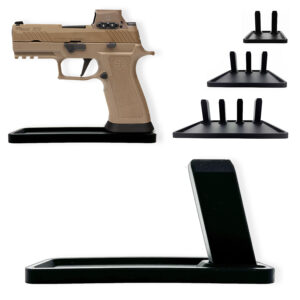
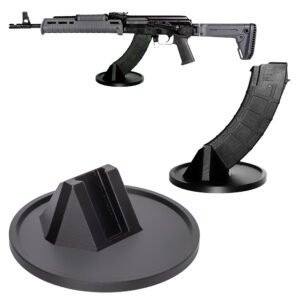
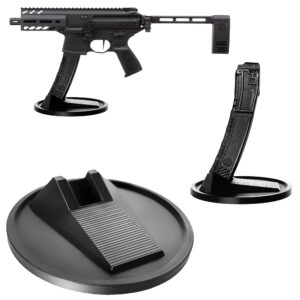
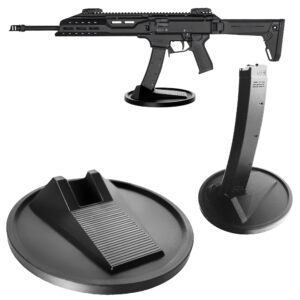




Colt
Colt M4 Carbine
Colt LE6920
Colt AR-15 A4
Daniel Defense
DDM4 V7
DDM4 V9
DDM4 V11
DDM4 ISR (Integrally Suppressed Rifle)
Smith & Wesson (S&W)
M&P15 Sport II
M&P15 Tactical
M&P15T
Bravo Company Manufacturing (BCM)
BCM Recce-16
BCM Recce-14
BCM MCMR Series
Aero Precision
M4E1 Series
AC-15
AR15 Pistol (Various Configurations)
Ruger
Ruger AR-556
Ruger SR-556
Ruger AR-556 MPR (Multi-Purpose Rifle)
Springfield Armory
Saint Victor
Saint Edge
Saint AR-15
PSA (Palmetto State Armory)
PSA PA-15
PSA AR-V
PSA Jakl (AR Pistol)
FN America
FN 15 Tactical Carbine
FN 15 Patrol
FN 15 DMR
Wilson Combat
Recon Tactical
Super Sniper
Protector Carbine
SIG Sauer
SIG M400 Tread
SIG M400 Elite
SIG M400 SDI
LWRC International
IC DI (Direct Impingement)
IC SPR
IC A5
Bushmaster Guns
XM-15 QRC
Bushmaster MOE
XM-15 Patrolman
Rock River Arms
LAR-15 Entry Tactical
LAR-15 Predator
LAR-15 Elite Comp
Stag Arms
Stag 15 Tactical
Stag 15L (Left-Handed Models)
Stag 15 Valkyrie
Noveske Rifleworks
Noveske Gen 4 N4
Noveske Space Invader (AR Pistol)
Noveske Recon
Anderson Manufacturing
AM-15 Optic Ready
AM-15 M4 Carbine
AM-15 Precision Rifle
Adams Arms
AA-15 Piston Rifle
P2 AARS (Adams Arms Rifle Series)
Black Rain Ordnance
SPEC15 Series
BRO Predator
Fallout 15
Diamondback Guns
DB15 Series
DB15CCMLB
DB15EB
Del-Ton Inc.
DTI-15
Del-Ton Echo 316H
Sierra 316M
Windham Weaponry
Windham SRC
Windham VEX-SS
Windham RMCS-4 (Caliber Conversion System)
Christensen Arms
CA-15 G2
CA-15 Recon
CA-15 Titanium Edition
Patriot Ordnance Factory (POF-USA)
Renegade Plus
P415 Edge
Revolution DI
LaRue Tactical
PredatAR
OBR (Optimized Battle Rifle)
LaRue Stealth 2.0
Battle Arms Development
Workhorse Patrol Carbine
BAD556-LW (Lightweight)
Authority Elite Rifle
Faxon Guns
Ascent AR-15
FX-19 (AR Pistol)
Streamline Ultralight Series
KE Arms
KE-15 SLT (Super Lightweight Tactical)
KE-15 Scout Carbine
Primary Weapons Systems (PWS)
MK1 MOD 2-M
MK116 PRO
MK107 (Piston AR Pistol)
ZEV Technologies
ZEV Core Elite Rifle
ZEV AR15 Billet Rifles
Franklin Armory
BFSIII AR-C1
Militia Model
F17-L (Chambered in .17 WSM)
Seekins Precision
SP15 DMR
NX15 Skeletonized Rifle
Havak Bravo
Aero Precision (Additional Models)
EPC-9 (Pistol Caliber ARs)
VG6 AR Rifles
Barrett Guns
REC7 DI
REC7 Gen II
CMMG
MK4 RCE
Resolute 300
Banshee (AR Pistol)
DPMS Panther Arms
Panther Oracle
Panther LR-308
H&K (Heckler & Koch)
HK MR556A1
HK416 (Military Variant)
Rock Island Armory (Armscor)
VR-80 Tactical AR (Shotgun AR Platform)
Troy Industries
Troy SPC-A3
Troy PAR (Pump Action AR)
Wilson Tactical
Tactical Recon AR
Protector Series
F1 Guns
FDR-15 Skeletonized Rifle
BDRx-15 Series
Juggernaut Tactical
JT-15
JT-10 Precision Rifle
AeroSurplus
Surplus AR-15 Rifles (Budget Models)
Thunder Tactical
AR-15 Basic Carbine
Tactical Builder Sets
Radical Guns
RF-15
Forged AR-Series
Dark Storm Industries
DS-15 Featureless Rifles
DS-10 Typhoon
DRD Tactical
Paratus
Aptus AR Rifles
Bear Creek Arsenal
BCA-15
AR Complete Upper Builds
Aero Survival Rifles (ASI)
ASR Tactical Series
Tactical Edge
WARFIGHTER Series
AR-15 Lightweight Rifles
Lone Star Armory
TX15 DMR
TX15 Carbine
HERA Arms
HERA H7
HERA AR-15 Lower Builds
IWI (Israeli Weapon Industries)
Zion-15
DRD Tactical
Tactical Modular Rifles
Quick-Takedown Rifles
V Seven Weapons
1776 Rifle
Hyperlite Rifle
Core Rifle Systems
Core15 Tac III
Core15 Patrol Rifle
Armalite (Original AR-15 Creator)
M15 Tactical
M15 A4 Carbine
DEF15 (Defensive Sporting Rifle Series)
PSA (Palmetto State Armory Additional Models)
PSAK-47 Hybrid (AR-AK Style Hybrid)
PSA Dagger (Pistol Caliber Configurations)
Odin Works
OTR-15
Odin Recon Rifle
Maxim Defense
MDX-508 PDX (Compact AR Pistol)
MDX-510 Rifle